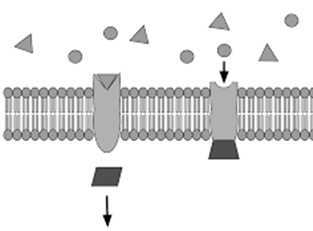
Some words are more versatile than others, such as pronouns. As I say ‘you’ to so many people, each of them becomes plugged into that linguistic slot, the pronoun ‘you’. There are many other words like it; ‘they’, ‘she’, ‘he’, but also ‘this’, ‘that’, ‘there’ and ‘then’. These can refer to any number of things, places, people, times. It is a property they share as ‘shifters’. Their meaning shifts dependent on the context of their use. They can be compared to the x in algebra, the wild card of a game. ‘You’ stands for an unknown before it is actually uttered. On its own it doesn’t make you think about a particular person.

Such shifters take in crucial positions within an architecture of language. In this sense a pronoun is very different from a noun, the word ‘chair’ that can only point to a chair. The versatility of pronouns and other shifters turn them into pivotal slots for reality, anchor points for a multiplicity of people and things. A comparable image that comes to mind are the receptors found in cells, involved in signalling between cells. They too offer a slot, a docking place.

However, as a key hole in which multiple keys are fitting, shifters are distinct slots for reality within the structure of language. As receptors for multiple forms, such versatile words are the frequent ‘joints’ in the amalgamation of language and reality. This can perhaps best be illustrated through the intricate detail in traditional Japanese wood joinery. ‘Shifters as slots for reality’ may seem more concrete after watching video material about joinery (see Pat Finn in Architizer). Pronouns are an important part of this grid. Their role is changing over time, as is their relative importance for different genres of speech. Foregrounding shifters helps us to consider the architecture of language in a historical perspective. New developments in digital joinery appear as a promising horizon for further comparative exploration.

Voxel based joint that can be customized and recreated
using digital fabrication techniques.
MARIA LARSSON, HIRONORI YOSHIDA,
NOBUYUKI UMETANI, AND TAKEO IGARASHI
References
Brown, N. Mass Timber Joinery Design for Digital Fabrication and De-constructability. Applied Research Consortium, College of Built Environments, University of Washington.
Finn, Pat 18 Intricate Examples of Traditional Japanese Wood Joinery.
https://architizer.com/blog/inspiration/industry/japanese-art-of-wood-joinery/
Fludernik, M. (1991). Shifters and deixis: Some reflections on Jakobson, Jespersen, and reference. Semiotica, vol. 86, no. 3-4:193-230.
Jakobson, R. (1971). [1957] Shifters, verbal categories and the Russian verb. In R. Jakobson (Ed.), Selected writings II: Word and language (pp. 130-147). Mouton.
Jespersen, O. (1965). [1924] The philosophy of grammar. A study of the living language, emphasizing the ideas that must underlie the science of grammar. The Norton Library.
Silverstein, M. (1976). Shifters, linguistic categories, and cultural description. In K. H. Basso, & H. A. Selby (Eds.), Meaning in Anthropology (pp. 11-56). University of New Mexico Press.